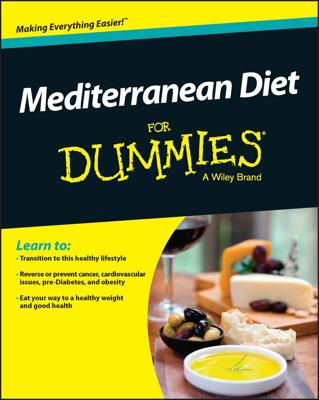Part of the Mediterranean lifestyle is using healthy, monounsaturated fats, such as olive oil, in place of butter or other fats. Oils are beneficial for cooking because they allow you to cook food at a higher temperature, and they provide flavor and texture to your foods.
Although the oils typically associated with the Mediterranean diet are healthier than other oils, they can turn your healthy strategy into an unhealthy one quickly if you aren’t careful. As with any fat, you don’t want to consume large amounts. Additionally, oils that are too old or have been stored at the wrong temperature are no good.
Taste your oil immediately when you open it so you can see what it tastes like in its freshest form. Doing so gives you a good comparison when checking oils that may have been sitting on the shelf for a while.
Smoke points of oils
All oils have what’s called a smoke point, or the temperature where the fat begins to break down, turning your healthy fat into an unhealthy fat. You want to avoid cooking oils at high temperatures so you don’t hit that point of no return.
You know it when your oil has reached the smoke point because you can actually see smoke and smell a burnt oil or burnt pan odor. According to the International Olive Oil Council, olive oil has a high smoke point of about 410 degrees. Canola oil, another monounsaturated fat, has a smoke point around 400 degrees.
Keep in mind that an oil’s smoke point will change depending on how many times you’ve opened your oil (which brings in oxygen) and how long it’s been sitting on the shelf. Don’t go higher than medium-high heat when using olive or canola oil; if you see smoke coming off your pan, it’s time to start over.
Identify the best oils for different dishes
The world of oils varies greatly in flavor, so you want to have a basic understanding of which oils work best for the different dishes you’ll be making in your new Mediterranean lifestyle. You can’t go wrong with a basic olive oil or extra-virgin olive oil.
Keep these general tips in mind as you search for oil:
When cooking large recipes, stick with a basic olive oil or extra-virgin olive oil.
When drizzling olive oil on vegetables or dipping your bread, go with a high-quality extra-virgin olive oil.
When you want a little extra punch, try an olive oil flavored with fresh herbs, vinegars, garlic, or lemon juices. Specialty olive oils get pricey, though, so you want to use them lightly.
To find a good olive oil, visit an olive oil store. The tasting room is set up like a wine tasting. Purchase a good all-purpose olive oil for cooking and one or two specialty olive oils for salads and dipping. The store usually provides a pretzel or piece of bread to sample the oils.
You can also plan ahead and bring your own veggies to dip into the different oils to figure out what complements their flavors best on your palette. You may love the citrus flavors of lemon-infused olive oil, or a more pungent garlic flavor. Olive oils come in all different types of flavors, so sample and find the ones you like best.
You can also purchase decent olive oil at any major grocery store chain or your local farmers’ market. If you’re intrigued by the specialty oils but can’t find them in your area, one great store is the Temecula Olive Oil Company.
Store oils correctly
To get as much benefit as possible from your oils, make sure you store them appropriately. Keep your oils in a cool, dark cabinet away from sunlight and heat. You can also store your main cooking oils, such as basic olive oil or canola oil, in the refrigerator. To avoid storing your oil for too long, buy only a small- to medium-sized glass bottle so that you use it quickly enough.
If you have a high-quality extra-virgin olive oil, avoid keeping it in the refrigerator; refrigerating increases the risk of condensation. Put the lid on tightly after each use to avoid oxidation, which can turn olive oil rancid. After you open a bottle of oil, store it for up to 6 months. If you’re using it frequently, you won’t have to worry about it wasting away on your shelf.
Know how much oil to use
People on the Mediterranean coast use a lot of oil. They drizzle oil on fresh vegetables and breads every day. When adopting this type of lifestyle, knowing how much is too much oil to drizzle is important.
To gauge your drizzle, measure a teaspoon of oil and drizzle it on a tomato. Get a feel for what the appearance and flavor of that much oil are like. If you feel it’s not enough for your taste, add a little vinegar or lemon juice to the mix.
Oil is a fat with 9 calories per gram, which equates to about 120 calories per tablespoon. Make sure you’re careful and don’t go overboard on calories and total fat.
Keeping tabs on your oil use is easier with recipes because they give you an exact amount. If recipes seem to call for a lot of oil, try adding a little less. The change likely won’t make a huge difference in flavor.

